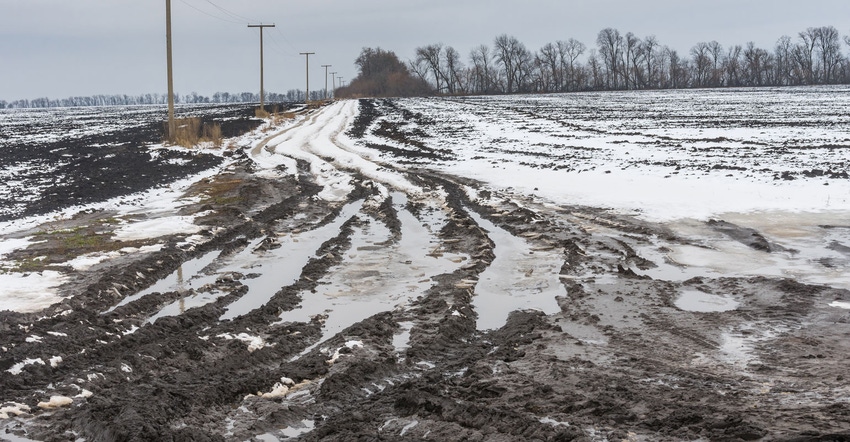
Whether you rely on the shape of a persimmons seed, magnetic storms on the surface of the sun or just good old-fashioned science, predicting the weather, especially the long-term forecast, isn’t an exact science.
But it’s always fun to look ahead to what Mother Nature will bring, especially during winter.
The Old Farmer’s Almanac is calling for below-normal temperatures from the heartland to the Pacific, but above-normal temperatures elsewhere.
“For some parts of the country, frigid and frosty conditions will last well into spring, bringing little relief to the winter-weary,” according to the Old Farmer’s Almanac website.
Storms will be all over the place, including no less than seven major storms from coast to coast.
“The middle of the country and New England can bank on a slush fund, as more wet than white conditions will leave sludgy messes that freeze during the overnights. Meanwhile, much of the Deep South will be saturated by soakers. As winter rages, the tip of the nice-berg will be Florida, the Gulf Coast, and Texas, which will bask in pleasant weather,” according to the website.
As for the Farmers’ Almanac, expect frigid temperatures from the Northern Plains into the Great Lakes.
The Northeast will be cold, too, with colder-than-normal temperatures for much of the season.
And if you like snow, you’re in luck. The Farmers’ Almanac is calling for above-normal winter precipitation across the Great Plains, Midwest and the Great Lakes. The Pacific Northwest and Southwest should see near-normal precipitation.
In the Northeast, expect a slushy mess of snow, rain and sleet.
Of course, let’s not forget about “The Persimmon Lady” forecast from Melissa Bunker. According to folklore, if you crack open a persimmon seed from a ripe fruit and look at the shape inside, it can forecast the winter weather. If you see a fork shape, winter will be mild; spoon shape, lots of snow; and knife shape, “bitingly cold that cuts like a knife.”
This year’s cracking of the persimmons revealed three forks, three spoons and two knives.
“Looks like a nice mild start to winter. However, it won’t last long. The fruit dropped really early and the seeds didn’t have time to mature for a reading,” according to the Farmers’ Almanac website. “That means winter will come quick. The heavily red fruit shows me there’s lots of sugars for the wildlife so that portents a hard winter.”
‘Real’ science predicts warmer winter
If you’re into actual scientists predicting the forecast, the annual winter forecast from NOAA’s Climate Prediction Center is calling for warmer-than-average temperatures for most of the country.
“Although below-average temperatures are not favored, cold weather is anticipated and some areas could still experience a colder-than-average winter,” according to the official synopsis.
Blame it on the lack of an El Niño or La Niña as neutral conditions are in play this year.
“In the absence of El Niño or La Niña, long-term trends become a key predictor for the outlook while other climate patterns, such as the Madden-Julian Oscillation and Arctic Oscillation (AO), will likely play a larger role in determining winter weather,” according to the synopsis.
 WARMER TEMPS: The National Weather Service is calling for above-average temperatures for most of the country, except for the Northern Plains.
WARMER TEMPS: The National Weather Service is calling for above-average temperatures for most of the country, except for the Northern Plains.

Wetter-than-average conditions are predicted for Alaska and Hawaii along with portions of the Northern Plains, Upper Mississippi Valley, the Great Lakes, and the Mid-Atlantic and Northeast.
It will be dryer than average in the South and in northern and central California, while most other areas will have “equal chances” for above- or below-average precipitation.
The forecast also calls for improving drought conditions in the Mid-Atlantic and Southeast, but drought will persist in central Texas and the Southwest.
Which one is right?
While the National Weather Service admits that predicting winter weather on a seasonal scale is challenging due to many factors, the Old Farmer’s Almanac and The Farmers’ Almanac rely on what they claim are “time-tested” formulas for weather prediction.
According to the online Mother Nature Network, Robert B. Thomas, founder of the Old Farmer’s Almanac, thought that Earth's weather was influenced by magnetic storms on the surface of the Sun and he developed a secret weather prediction formula based on that belief. The book’s editors claim an 80% accuracy rate.
 WET IN THE PLAINS: Along with colder temps, the Northern Plains are also under the gun for a wetter-than-normal winter.
WET IN THE PLAINS: Along with colder temps, the Northern Plains are also under the gun for a wetter-than-normal winter.

The Farmers’ Almanac makes its forecasts based on sunspot activity, tidal action of the moon, the position of the planets and other factors.
While the exact formula is a mystery, the only person who knows it is the almanac’s official weather prognosticator who goes by the pseudonym Caleb Weatherbee, according to Mother Nature Network.
The Farmers’ Almanac claims an 80% to 85% accuracy rate.
So, which one is right? Only time will tell. But it’s always best to prepare for the worst.
About the Author(s)
You May Also Like






